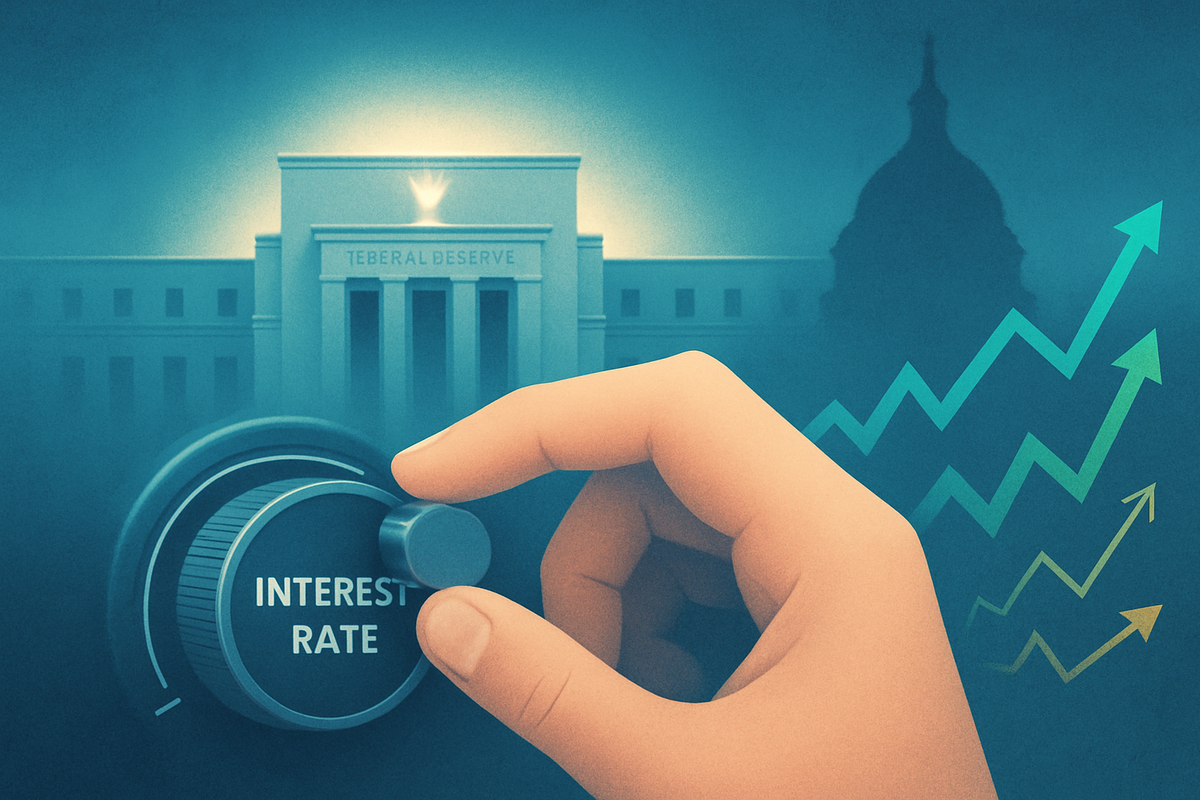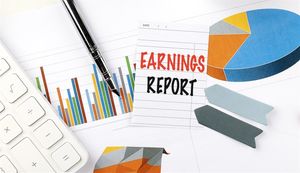Financial News
The Federal Reserve's Dovish Turn: Fueling a Rally, But Jitters Persist as Economy Navigates Easing Waters

The financial markets are currently riding a wave of optimism, propelled by the Federal Reserve's decisive pivot towards a more accommodative monetary policy. This 'easing stance,' initiated in late 2024 and continuing through 2025, has seen the central bank systematically reduce the federal funds rate, aiming to inject liquidity and stimulate economic growth amidst signs of a softening labor market and moderating inflation. The result has been a notable market rally, with equity indices reaching new highs and bond yields recalibrating to the new interest rate environment.
However, beneath the surface of this bullish sentiment, a palpable sense of 'lingering jitters' remains. Investors are grappling with the dual realities of an economy still navigating its post-inflationary landscape, the impact of an ongoing government shutdown on critical economic data, and the long-term implications of sustained lower rates. While the Fed's actions have undoubtedly provided a tailwind for asset prices, the path ahead is fraught with uncertainties, prompting a cautious optimism rather than unbridled enthusiasm.
The Fed's Strategic Pivot: A Timeline of Easing
The Federal Reserve's shift away from its restrictive monetary policy marks a significant turning point after a period dominated by aggressive rate hikes. Following the maintenance of a federal funds rate range of 5.25%-5.50% from July 2023 to September 2024, coupled with an extensive quantitative tightening (QT) program, the central bank began its dovish pivot in the latter half of 2024.
The initial and most impactful move came in September 2024, when the Fed cut the federal funds rate by 50 basis points to a range of 4.75%-5.00%, the first reduction in four years. This was swiftly followed by two additional 25-basis-point cuts in October and December 2024, bringing the rate to 4.25%-4.50% by year-end. After a pause in early 2025, further cuts resumed in July 2025 (0.25% to 4.00%-4.25%) and September 2025 (another 0.25% cut, maintaining the 4.00%-4.25% range). As of October 7, 2025, markets widely anticipate another 25-basis-point cut at the upcoming FOMC meeting later this month, potentially lowering the rate to 3.75%-4.00%. While quantitative tightening has continued, the pace of asset sales has been significantly reduced, with no new quantitative easing measures announced.
The stated rationale behind this pivot, articulated by Federal Reserve Chairman Jerome Powell and other officials, centers on a "shift in the balance of risks." Primarily, a softening labor market has become a key concern, with job gains slowing dramatically to an average of just 25,000 per month since April 2025, a stark contrast to previous years. The unemployment rate has edged upwards, prompting the Fed to act preemptively to prevent a more substantial weakening. Furthermore, while inflation has moderated considerably from its 2022 peaks (Core PCE at 2.9% in July 2025), it remains slightly above the Fed's 2% target. The central bank appears to be prioritizing the health of the labor market over the remaining inflation battle, viewing the cuts as a "risk management" strategy. This aligns with a broader trend of economic moderation, with U.S. GDP growth cooling to 1.6% annually in the first half of 2025, driven by weaker consumer spending.
Initial market reactions were overwhelmingly positive. Equity markets, including the S&P 500 (NYSE: SPY), Nasdaq Composite (NASDAQ: QQQ), and Dow Jones Industrial Average (NYSE: DIA), surged, with many indices reaching new record highs. Investors interpreted lower borrowing costs as a boon for corporate profits and a sign of a potential "soft landing." In the fixed income markets, U.S. Treasury yields fell, particularly for shorter-term maturities, leading to a gradual steepening of the yield curve. The U.S. dollar generally weakened against other major currencies, reflecting the diminishing interest rate differential. This widespread optimism, however, has been tempered by underlying concerns, contributing to the aforementioned "lingering jitters" that continue to influence investor decisions.
Corporate Fortunes: Winners and Losers in an Easing Environment
The Federal Reserve's pivot to an accommodative stance, characterized by lower interest rates and a reduced pace of quantitative tightening, is creating a distinct landscape of winners and losers across various sectors and public companies. As of October 7, 2025, with the federal funds rate at 4.00%-4.25% and further cuts anticipated, the cost of capital is decreasing, influencing investment and consumer behavior.
Winners are largely found in sectors highly sensitive to interest rates and those benefiting from increased market liquidity. The Real Estate and Homebuilding sectors are poised for significant gains, as lower mortgage rates make homeownership more affordable, stimulating demand. Companies like construction equipment maker Caterpillar (NYSE: CAT) and building material suppliers such as Builders FirstSource (NASDAQ: BLDR) and Mohawk Industries (NYSE: MHK) are expected to see increased activity from residential construction. Similarly, Highly Leveraged Companies across various industries will benefit directly from reduced borrowing costs, improving their profitability and financial health. Small-Cap Companies, often more reliant on variable-rate debt and bank loans, also stand to gain as their cost of capital decreases, potentially fueling expansion. The Consumer Discretionary sector could see a boost as cheaper borrowing and potentially stable job growth (despite a loosening labor market) encourage consumer spending. While overall bank profitability can be mixed, consumer finance divisions of Financials tend to benefit from increased lending activity. Investment banks like Goldman Sachs (NYSE: GS) could also see higher fees from stimulated capital markets. Lastly, Defensive Sectors such as Utilities and Healthcare have historically outperformed in the months following initial Fed rate cuts, as investors seek stability during economic transitions.
Conversely, certain sectors and companies may face challenges. Banks, particularly those with a higher proportion of floating-rate loans, could experience net interest margin (NIM) compression as the spread between what they earn on assets and pay on liabilities narrows in a prolonged low-rate environment. While eventually benefiting from lower rates, the Manufacturing Sector has faced dampening investment from previous high borrowing costs and may take time for a full recovery, especially amidst global trade uncertainties. The Private Equity industry, heavily reliant on leverage, has seen its aggressive use of debt curtailed, and while easing should help, the landscape remains challenging for exit opportunities. Companies with Less Debt or High Cash Holdings might see less direct benefit from falling rates compared to their highly leveraged counterparts, as their competitive advantage in financing costs diminishes. The Energy Sector, while supported by general economic growth, could struggle if softening economic conditions lead to a significant drop in global oil prices, potentially offsetting the benefits of lower borrowing costs.
Wider Significance and the Shadow of a Government Shutdown
The Federal Reserve's accommodative pivot in 2024-2025 is not merely a technical adjustment; it represents a profound shift with wide-ranging implications for global financial markets, industry trends, and the very framework of monetary policy. This easing cycle, initiated to support a softening labor market and economic growth, is occurring against a backdrop of unique challenges, including an ongoing U.S. government shutdown that amplifies market 'jitters.'
Broadly, this policy encourages a "risk-on" sentiment, pushing investors towards equities and other growth assets. In terms of broader industry trends, the housing market is expected to gain momentum, benefiting from more affordable mortgage rates and developer loans. Technology and Growth Stocks, particularly those in emerging fields like Artificial Intelligence (AI), which thrive on access to cheaper capital for innovation and expansion, are well-positioned for continued growth. The current AI boom, for instance, has already fueled robust corporate earnings for mega-cap technology companies. Furthermore, a weaker U.S. dollar, a common byproduct of lower rates, could broadly support commodity markets, potentially contributing to long-term inflationary pressures.
The ripple effects extend to competitors and partners. Companies that are highly leveraged stand to gain a competitive edge due to reduced financing costs, while those with substantial cash holdings might see diminished returns on their assets. Globally, the Fed's actions exert significant influence, impacting international capital flows, currency exchange rates, and potentially guiding other central banks' policy decisions.
From a regulatory and policy perspective, the Fed faces a delicate balancing act. While stimulating growth, easy monetary policy can foster financial vulnerabilities like excess credit and compressed risk premiums. Regulators must vigilantly monitor for "reaching for yield" behavior in financial institutions. The Fed's dual mandate of maximum employment and price stability remains central, and this easing reflects a current prioritization of employment. Importantly, the Fed's monetary policy framework, last updated in 2020, is due for a review in 2025, which will be critical in shaping future policy setting. External factors, such as the current administration's trade tariffs and immigration policies, also influence inflation and, consequently, the Fed's trajectory.
Historically, this period echoes past "insurance cuts," where the Fed proactively eased policy to stave off deeper economic slowdowns, such as those in 1984 and 1995 which led to "soft landings." The S&P 500 (NYSE: SPY) has historically shown positive returns, averaging 14.1% over 12 months, following the initiation of rate cuts during non-recessionary periods. However, a significant "jitter" in the current environment is the ongoing U.S. government shutdown, which commenced on October 1, 2025, and is now in its seventh day. This shutdown, stemming from a congressional impasse over a spending bill, has triggered a severe "data blackout." Key economic reports, including the monthly jobs report (due October 3), CPI (expected October 15), and PCE price index, are delayed or suspended. This forces the Fed to operate "blind," deprived of vital information for its upcoming October 28-29 FOMC meeting. Paradoxically, this data uncertainty could prompt the Fed to implement more aggressive "insurance cuts" to preempt undetected economic deterioration, a scenario supported by historical precedents where data blackouts accelerated monetary loosening.
The Road Ahead: Navigating Opportunities and Challenges
The Federal Reserve's accommodative stance sets the stage for a dynamic period, presenting both opportunities and challenges for investors and the broader economy. In the short term, the market is widely anticipating further rate cuts. The ongoing government shutdown and the resulting data blackout could paradoxically accelerate this process; if the Fed remains deprived of comprehensive economic data, it might opt for more aggressive "insurance cuts" to mitigate the risk of an undetected economic downturn. This could provide additional fuel for the current market rally, particularly for growth-oriented sectors and highly leveraged companies. However, the lack of data also introduces significant uncertainty, potentially increasing market volatility as investors operate with incomplete information.
Longer term, the implications of sustained lower interest rates are multifaceted. While intended to stimulate growth, there's a risk of creating asset bubbles or fostering excessive risk-taking in the financial system. The Fed's 2025 framework review will be crucial in assessing how its policies performed and how it plans to navigate future economic cycles. Potential strategic pivots for businesses include re-evaluating debt structures to capitalize on lower financing costs, investing in capital expenditure projects, and expanding operations. Market opportunities may emerge in sectors poised for growth in a lower-rate environment, such as renewable energy infrastructure, technology innovation, and affordable housing. Conversely, challenges could arise for financial institutions grappling with compressed net interest margins, or for companies unable to effectively adapt to shifting consumer spending patterns in a moderately slowing economy.
Potential scenarios range from a successful "soft landing," where the Fed orchestrates a gradual economic slowdown without triggering a recession, to a more challenging environment if inflation proves stickier than anticipated or if the labor market weakens more severely than the Fed's current projections. The duration and impact of the government shutdown will be a critical determinant, as a prolonged data blackout could lead to policy missteps or an overcorrection, potentially exacerbating economic jitters.
Comprehensive Wrap-up: Cautious Optimism Amidst Uncertainty
The Federal Reserve's pivot to an accommodative monetary policy in late 2024 and throughout 2025 has been a defining feature of the financial landscape. This strategic shift, driven by concerns over a softening labor market and moderating inflation, has successfully fueled a robust market rally, with equities reaching new highs and borrowing costs decreasing across the board. The series of interest rate cuts, alongside a reduced pace of quantitative tightening, signals the Fed's commitment to supporting economic growth and employment.
However, this period of easing is not without its complexities and a persistent undercurrent of 'lingering jitters.' The most immediate and pressing concern is the ongoing U.S. government shutdown, which has created a critical "data blackout," leaving the Federal Reserve to make crucial policy decisions with incomplete information. This uncertainty adds a layer of risk, as the Fed might be forced to act more aggressively to preempt unforeseen economic weakening.
Looking ahead, the market will remain highly sensitive to the Fed's future actions, particularly the anticipated rate cuts later this month and into 2026. Investors should closely monitor not only official economic reports (when they resume) but also alternative data sources and the Fed's communications for clues on its policy trajectory. Companies in rate-sensitive sectors like real estate, technology, and those with significant debt stand to benefit, while banks and some manufacturing firms may face headwinds. The overarching narrative is one of cautious optimism: while the Fed's easing has provided a strong tailwind, the path to a stable, growing economy is complicated by data uncertainty and the inherent risks of prolonged accommodative policy. Investors should prepare for continued volatility and focus on resilient companies with strong fundamentals that can adapt to evolving economic conditions.
This content is intended for informational purposes only and is not financial advice
More News
View More





Quotes delayed at least 20 minutes.
By accessing this page, you agree to the following
Privacy Policy and Terms Of Service.



